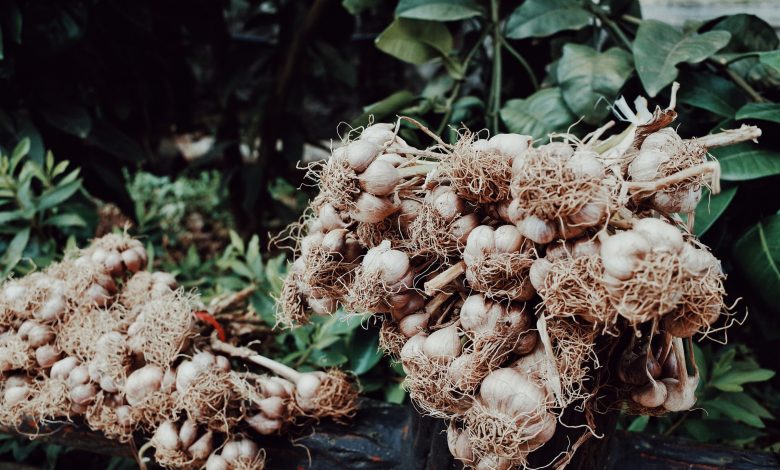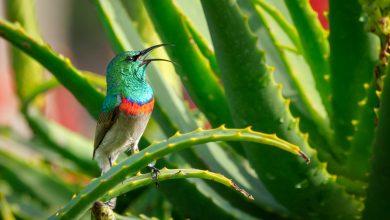11 Plants That Repel Snakes

Snakes occupy a crucial position in the ecosystem as both prey and predator; they contribute significantly to keeping rodent populations in check. Some snakes are harmful and may even be lethal to humans.
As it often requires expertise to tell harmful species from benign ones, it’s best to protect against all types of snakes. A natural and easy way of stopping snakes from getting into a home and garden is to employ snake repellent plants.
Specific characteristics of these plants, such as shape, texture, and smell, can successfully dissuade snakes. Snakes’ aversion to potent smell is due to the Jacobson’s organ, a part of their anatomy that makes snakes particularly sensitive to strong odors. The following is a list of some snake repelling plants.

Kaffir Lime (Citrus Hystrix)
The Kaffir lime, Thai lime, or Makrut lime plant possesses a potent citrus scent that snakes avoid. The lime is a tropical plant from Southeast Asia and features in many traditional dishes.
Citrus hystrix has thorns on its stems and grows as a bush or tree reaching 35 feet in height. It bears small round fruits with a rough green rind that changes to yellow when ripe. The glossy green leaves of the plant have a unique double shape like two separate leaves fused, one growing from the tip of the other.
Citrus hystrix grows best in well-drained moist soils, moderate humidity, and under adequate sunlight. The plants are susceptible to frost. Therefore, make sure to protect them from the cold.
If you intend to use it as a snake repellent, then it’s best to keep the plant from growing into a tree. To do this, prune the plant while it’s young to discourage spreading.
Cacti (Cactaceae)
The collection of spines on cactus plants is a defense mechanism to discourage herbivores; the spines will also intimidate slithering snakes.
There are about two thousand members of the cactus family, and they’re available in various shapes and sizes. The majority of cacti are succulents and have adapted to survive in dry areas with little water, enduring even in deserts. As such, cacti will grow in warm climates with moist aerated soil and ample sunlight.
The best cactus to repel snakes are the low growing types, such as golden ball cactus and claret cup cactus, that form thickets close to the ground where snakes may pass. Golden ball cactus or yellow tower grows in clusters up to three feet in height; it appreciates fast-draining soils and partial shade on scorching days.
Claret cup cactus, or hedgehog, is native to Southern U.S and Northern Mexico. It grows to six feet across and three feet tall with densely packed spines. The flowers are orange to red and funnel-shaped. The plant prefers some shade and fast-draining soils.
Lemongrass (Cymbopogon Citratus)
Lemongrass produces a citrus-like scent, similar to that of the fruit it’s named after. The citrus smell is one that snakes find offensive. The plant may also be effective against mosquitoes and ticks, as its essential oil serves as an insect repellent.
Otherwise known as barbed wire grass or silky head, lemongrass is a tropical Asian, African, and Australian perennial plant of the Poaceae grass family. The plant enjoys six to eight hours of sun and temperatures up to 80 degrees Fahrenheit. Though it thrives in moist aerated soils, it’s also drought resistant and easy to maintain once established.

Society Garlic (Tulbaghia Violacea)
The odor produced by this plant is nothing like garlic, but it’s pungent enough to keep snakes away.
The society garlic is a flowering perennial plant native to South Africa. It grows up to 24 inches in height and 10 inches wide, with thin leaves and purple flowers. The plant smells like cannabis.
Society garlic will grow in sunny areas with well-drained and fertile soil. It’s also drought resistant.
Marigold (Tagetes)
Although the vivid orange, yellow, or burgundy flowers of the Marigold are beautiful, its roots are deep growing and aggressive. They produce a particularly pungent odor that snakes find offensive.
Marigold is the general name for plants of the genus Tagetes, which are annual or perennial herbs of the sunflower family. Some species can grow up to seven feet tall.
Marigolds are native to the south of Mexico but have become naturalized in many parts of the world; they enjoy full sunshine and can withstand hot summers. Marigolds prefer well-drained soils. However, they’ll grow in most soils, with moderate amounts of water, preferably at the base, as overhead watering may lead to powdery mildew in mild temperatures.
Marigolds are great companion plants for crops like vegetables, cucumbers, and strawberries, as the roots are known to repel the nematodes that attack these crops.

Green Chiretta (Andrographis Paniculata)
Like marigolds, Green chiretta or Creat has foul-smelling roots which snakes find repugnant. Also, the bitter-tasting leaves cause the snake’s skin to swell.
Green chiretta is a herbaceous plant native to Asia, particularly the countries of India and Sri Lanka. It grows to heights of 12 to 43 inches and has green lance-like leaves. When it blooms, the flowers are sparse, small, and pink, appearing about three months post-planting. The fruit of the plant is a small capsule containing several yellow-brown seeds.
Green chiretta thrives in sunny areas, with moderate humidity. The plant will grow in most soils, provided there’s water.
Mugwort (Artemisia Vulgaris)
Also called felon herb and chrysanthemum weed, for some yet unknown reasons, snakes tend to give this plant a wide berth. The essential oils of the plant also have insect-repelling properties.
Mugwort grows in temperate climates and is native to Europe, Asia, and North Africa. The plant’s rapid growth has it designated as a weed in North America. It’s a tall perennial herb of the Asteraceae family, growing up to four feet in height, with rigid purple-tinged stems and large, dark green, yet curved leaves. Small circular red or yellow flowers bloom in the summer.
Artemisia vulgaris thrives when given ample sunlight and soils with good drainage. The plant will grow in a host of soil conditions, including nitrogenous soils and alkaline soils of up to 8 pH.
The artemisia grows by spreading its roots. As they grow, the roots produce chemical substances that can have adverse effects on the growth of other plants. As such, position Mugworts away from other plants, and prune the roots when they spread too far.

Indian Snakeroot (Rauvolfia Serpentina)
Otherwise known as devil pepper, the leaves and roots of the plant are used in traditional Asian medicine to treat snake bites and repel snakes. The plant also contains reserpine, a sleep-inducing and heart slowing compound.
The Indian snakeroot is a perennial shrub native to the tropics of India and other parts of Asia. The plant grows to three feet in height; it has shiny green leaves with a pale underside. It prefers moist but well-drained soil and grows best with some shade overhead to protect from long hours of direct sun.
Garlic (Allium Sativum)
This vegetable is famous for repelling snakes due to its potent smell. As the snakes slither by, oil from garlic cloves will irritate their skin.
Plant garlic in well-drained and aerated soil (like sandy loam), in an area that receives six to eight hours of sunlight.
Onion (Allium Cepa)
Like garlic, snakes do not like the smell of onions. Onions will grow well in the same conditions as garlic, and the two plants are often grown together.
Snake Plant (Sansevieria Trifasciata)
Also known as mother-in-law’s tongue, snake plants do not emit any offensive smells or oils. Instead, snakes are wary of the plant because of the stiff and sharp leaves that can injure them as they slither on the ground.
The erect blade-like leaves of the plant are green with yellow edges; some varieties can grow up to six feet tall. Snake plants are drought resistant and easy to maintain, preferring moderate to low amounts of water and will do well as a bright or low light plant. Besides being a snake deterrent, the plant also has air purifying abilities.

Effectively Repelling Snakes with Plants
The plants listed above have some ability to repel snakes. But to effectively bar snakes from your home and garden, you will need to do more than cultivating plants.
Combine Snake Repellent Plants
It’s important to note that, while plants can repel snakes, no one plant will work for all snake species. The most effective approach is to cultivate more than one of these snake deterrent plants. For instance, planting onions is good, but a combination of onions, garlic, and lemongrass is better. Position these plants in succeeding rows. You may put lemongrass first for its sturdiness, garlic second, and then onions.
Choose the Right Plants for Your Environment
Snake repelling plants will vary depending on the natural environment, meaning that some of the plants listed above won’t be suitable for your garden.
While it’s possible to imitate native plant climates, it’s impractical to do so for outdoor plants. As such, choose plants that won’t just grow, but also thrive in your garden, as healthier plants will dissuade snakes better.
Discourage Rodents
Snakes feed on rats, mice, and other rodents; they’ll only visit your garden if there’s food. As such, a move to prevent rodents from entering will, in turn, prevent snakes. Plants like marigold, wormwood, and lavender repel rodents.



